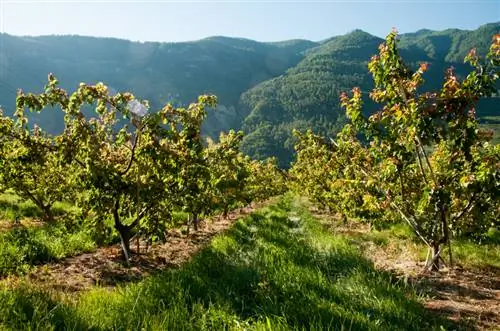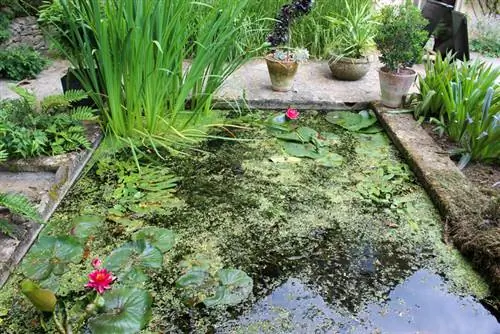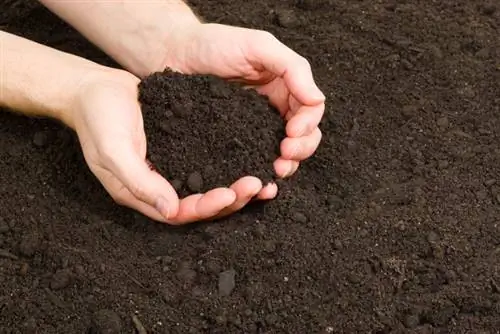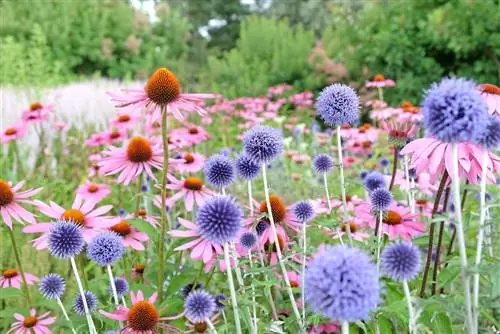- Author admin [email protected].
- Public 2023-12-16 16:46.
- Last modified 2025-01-23 11:21.
So that the plants in the garden bed grow and thrive splendidly, you should plant the different species according to your individual preferences.
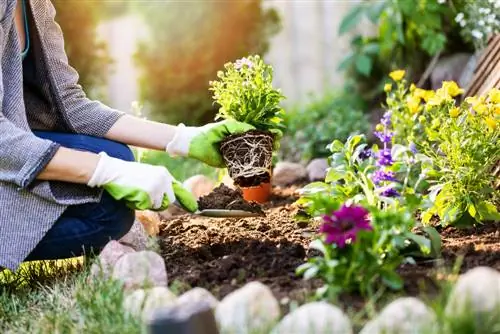
Which plants are suitable for different bed locations?
When planting a bed, you should choose plant species according to your individual preferences. Pay attention to the location, dry or moist, shady or sunny, and choose suitable plants, such as Astrantia, Dicentra spectabilis or rhododendron for moist shade or lavender, peonies and lilacs for sunny areas.
Plants feel most comfortable in suitable locations
Always work with the natural garden environment, not against it. Although you can adapt some conditions, for example by setting up a windbreak and shielding sensitive plants in unprotected areas, in some areas you will never be able to grow certain species successfully - species that require sun and warmth certainly do not thrive in the shade, just like wetland plants will never feel comfortable in a stone bed. Respect the different microclimates of your garden and choose plants that suit them. In some areas your choice of plants may be limited, but your garden is sure to bloom and thrive with he althy plants.
The right plants for different locations
Below you will find some plant suggestions for typical garden bed locations. An arrangement of he althy plants, even if there are just a few different species, always looks more attractive than many different but overgrown, diseased and struggling specimens.
Plants for moist, shady locations
Damp, shady locations are among the problematic areas in the garden. But even here many different species still thrive:
- Astrantia (star umbel)
- Camellia
- bleeding heart (Dicentra spectabilis)
- Magic hazel (Hamamelis mollis)
- Christmas rose (Helleborus)
- Funkia (Hosta)
- Mahonia (Mahonia aquifolium)
- Rhododendron
- Viburnum davidii)
Plants for dry, shady locations
By the way, “shady” does not mean that light can be completely absent here: the gardener only means the absence of direct sunlight. However, such a location can be comparatively bright, for example if bright house walls reflect the light in an inner courtyard. For example, the following species feel comfortable in a shady but dry location:
- Japan anemone (Anemone japonica)
- Aukube (Aucuba japonica)
- Bergenia (Bergenia)
- Spurge (Euphorbia)
- Holly (Ilex)
- Ysander (Pachysandra terminalis)
- Lungwort (Pulmonaria)
- Skimmie (Skimmia)
- Periwinkle (Vinca)
Plants for dry, sunny locations
Many flowers and flowering perennials thrive in dry, sunny locations, especially the species from the Mediterranean region:
- Yarrow (Achillea)
- African Lily (Agapanthus)
- Rockrose (Cistus)
- Globe thistle (Echinops ritro)
- Storksbill (Geranium)
- Iris (Iris germanica)
- Catnip (Nepeta)
- Holy Herb (Santolina)
- ragwort (Senecio)
- mullein (Verbascum)
- Palm Lily (Yucca)
Plants for acidic soils
On acidic soils, you should prefer appropriate plants and not continually try to change the pH value of the soil. The following species in particular thrive here:
- Azalea
- Camellia
- Lavender heather (Pieris)
- Rhododendron
- Skimmia (Skimmie)
Plants for alkaline soils
The selection of plants is particularly large on beds with alkaline soil:
- Butterfly bush (Buddleja davidii)
- Clematis
- Cotoneaster
- Carnation (Dianthus)
- Lavender (Lavandula)
- Peony (Paeonia)
- Scabiosa (Scabiosa)
- Lilac (Syringa)
- mullein (Verbascum)
Plants that also feel comfortable on roads with higher exhaust emissions
Many plants only feel comfortable in clean air and are therefore not suitable for planting in a bed that is located on a busy street. Exhaust-resistant species include:
- Aukube (Aucuba japonica)
- Barberry (Berberis)
- Japanese quince (Chaenomeles)
- Cotoneaster
- Holly (Ilex)
- Pipe bush (Philadelphus)
- Lilac (Syringa)
- Weigela (Weigela florida)
Tip
Vegetable plants generally prefer full sun locations, which is why beds for crops should always be in the sunniest area of the garden.


